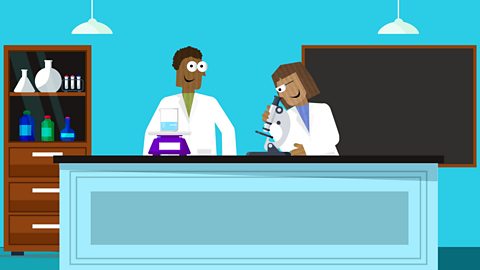What is Inheritance?
All living things β including people, plants and animals β must reproduce to ensure the survival of their species.
When they do β they pass on genetic information from one generation to the next β in a process known as inheritance.
Inherited genetic code helps determine what their young look like β and how they act.
A cat will inherit visible characteristics from its parents, like fur, claws and teeth.
But also characteristics that are unseen β like knowing what food it can eat to get the nutrients it needs.
Because each living thing that reproduces in this way is a mixture of the genetic codes they inherited from birth, they can look similar to their parents, but never identical β there will always be variations.
They might have the same hair colour as one parent;but the same colour eyes as another.
Or β they might look more like their great-great-grandparents!
You can explore how animals inherit different features from their parents and grandparents by comparing physical features.
Which physical features have these offspring inherited from their parents?
Sometimes, when two different species reproduce, they create something new!
Can you tell what you get if you cross a zebra with a donkey?
You guessed it β a zonkey!
What if you cross a grizzly bear with a polar bear?
They produce a Pizzly Bear!
And if you cross a purebred Labrador with a purebred Poodle β you get a Labradoodle!
Not all characteristics are inherited from our parents β some are developed as a result of an interaction with the environment.
Environmental variation is determined by lots of different things, including nutrition and climate.
Hummingbirds have developed long, thin bills so they can drink the nectar in plants with long flowers.
Pacific blackdragon fish absorb light to avoid being seen by predators.
Inherited variation and environmental variation combine to ensure that animals constantly evolve and adapt to suit their changing environments.
When plants and animals are not able to evolve or adapt β sometimes, they have become extinct.
We know this because fossils provide information about living things that inhabited the Earth millions of years ago.
Humans have used their knowledge of inheritance to produce plants and animals that are more productive.
Theyβve crossed breeds of cows to produce more milk;plants to produce more wheat;and chickens to produce larger eggs!
Scientists and farmers have also taken it one step further β by cloning plants and animals to produce exact replicas.But there can be downsides to artificial cloning and manipulating inheritance.
Disease and weakness may be passed on to the next generation.
You can learn more about inheritance by playing a card game.
On two sets of cards, draw 5 animals and 5 ways of eating.
Can your friends match the inherited characteristic with the action?
For example, echidnas have long snouts β because it helps them catch ants and termites.
Giraffes have long necks β so they can reach leaves on the top of trees.
What other inherited characteristics can you match with an action?
Video summary
This short animated film explores inheritance.
Inheritance is when a living thing reproduces and passes on genetic information to its offspring.
This film explains how inheritance works in humans, animals and plants.
The film also explores how humans use inheritance to their advantage to produce animals and plants that are more productive.
This short film is from the ΒιΆΉΤΌΕΔ Teach series Explain, Explore, Expand.
Teacher Notes
Explain
When living things reproduce, they pass on their genes to the next generation.
How does that affect their young and what other factors can cause changes that we can and canβt see?
Letβs explore inheritance and discover why some cats are fluffier than others.
Key Facts
- All species - people, plants and animals - reproduce offspring.
- All offspring from sexual reproduction have characteristics that vary from the parents.
- Characteristics are distinguishing features of any species that can be used for identification.
- Some characteristics are inherited from the parents and cause variation; some are acquired from the interaction with the environment. This is environmental variation.
- All living things pass on their genetic code through reproduction.
- Reproduction can be classified as: sexual and asexual.
- Sexual reproduction needs two parents. Since there is a mixing of genetic information, the offspring will have variation.
- Without inherited variation, a species could be impacted by a change in negative environmental factors, the species may be unable to adapt to changing environments and evolve, so it could become extinct.
- In asexual reproduction fertilisation is not required. Only one parent is involved, and the offspring are genetically identical to that parent. They are also genetically identical to each other and are therefore referred to as clones.
- Taking cuttings from plants is an easy form of cloning.
- Clones lack inherited variation so could be damaged by a disease that impacts a parent.
- This video references the Pacific Blackdragon Fish. Further information can be found here:
- ΒιΆΉΤΌΕΔ News - Scientists shed light on how the blackest fish in the sea 'disappear'
Explore
Where to pause?
- 01:03 - Pause and discuss variations. Let the children discuss what variations they think their pets may have. Which may be inherited and which may be due to environmental variations?
- 02:04 - Pause and discuss what may happen to a species that gets weaker due to changes in the environment/diet?
- 02:47 - Pause and ask why do the children think that humans make clones of plants and animals if they can lead to disease and weaknesses?
Activities / Experiments
- Activity 1:
The following are all breeds that have been crossed by humans or could and have crossbred in nature. Can you find out what the original parents were?
Wholphin, Liger, Coywolf, Zebroid, Dzo, Grolar Bear, Cama
- You could do an art project and make a drawing of two animals you have crossed and give it a name. Remember the male parentβs name is first and the female parent name is second. i.e male lion + female tiger = Liger
Activity 2:
You can create clones (plants with identical characteristics to the parent plant).
Fun Facts
We have cloned a number of species including: cats, deer, dogs, horses, rabbits._
Expand
Discussion questions:
- What are your characteristics?
- Why are there so many different breeds of dogs?
- What happens if we do not have inherited variation?
- How have humans used their knowledge about inherited characteristics of plants and animals to benefit society? What are the positives and the negative repercussions of this?
Additional Links:
Learning Objectives:
- To recognise that living things produce offspring of the same kind and understand how characteristics are inherited from their parents.
National Curriculum objectives:
England: To recognise that living things produce offspring of the same kind, but normally offspring vary and are not identical to their parent.
Scotland: To compare generations of families of humans, plants and animals, begin to understand how characteristics are inherited.
Northern Ireland - building on KS1: How we grow, move and use our senses, including similarities and differences between ourselves and other children.
Linked to: Obvious changes that occur in lifecycles (this is from the change over time KS2)
Statutory requirements: Recognise that living things produce offspring of the same kind, in sexual reproduction, offspring vary and are not identical to their parents.
Non Statutory: They should be introduced to the idea that characteristics are passed from parents to their offspring, for instance by considering different breeds of dogs, and what happens when, for example, labradors are crossed with poodles.
Sources:
How are shadows made? video
What are shadows? How are they made? What factors affect their size and shape? Letβs explore shadows in more detail β and learn how to turn your shadow into a clock!
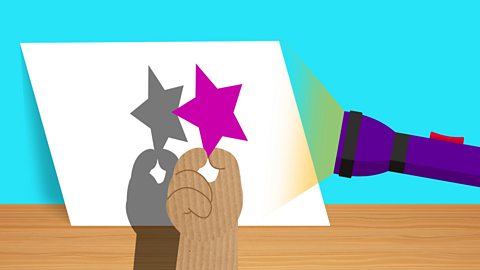
Changing environments. video
This film explains how important environments are, what factors can change the conditions of different environments and how that can affect the things living in them.
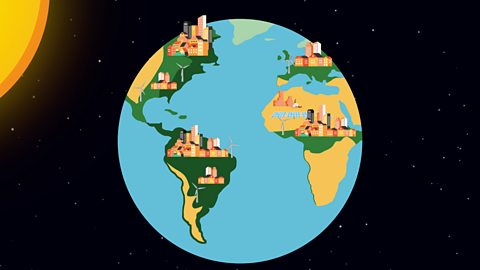
How do ecosystems work? video
This film explains the difference between biotic and abiotic, terrestrial, freshwater and ocean water ecosystems and looks at the effect of weather.
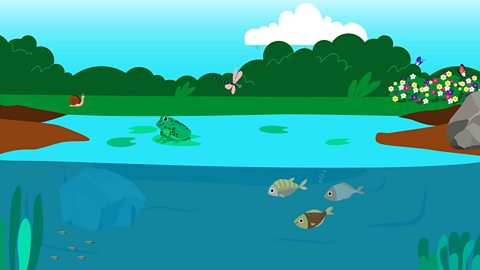
What are air and water resistance? video
This film explains the difference between water and air resistance and demonstrates examples of how resistance plays a part in our everyday life.
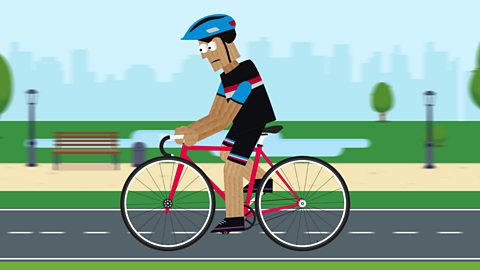
Day and night. video
This film explores the difference between day and night and demonstrates how the rotation of the earth's axis contributes to making seasons such as summer and winter.
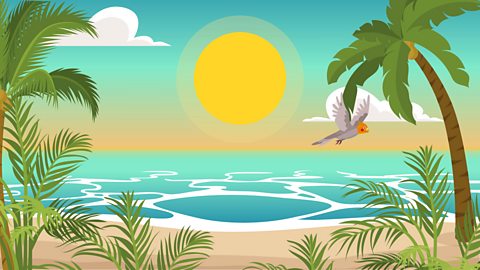
Mechanisms. video
This film explains what a mechanisms are, using examples of where they are used and how they make our lives easier.
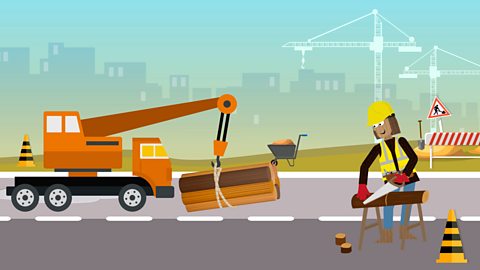
What should I do with my rubbish? video
This film explains the impact waste is having on our planet and how we can work to reduce our rubbish to make a difference.
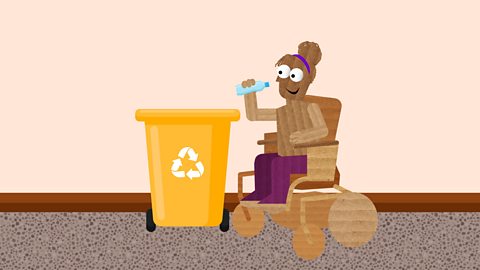
How to use scientific equipment. video
This film explains how we can use science equipment to develop our scientific abilities.
